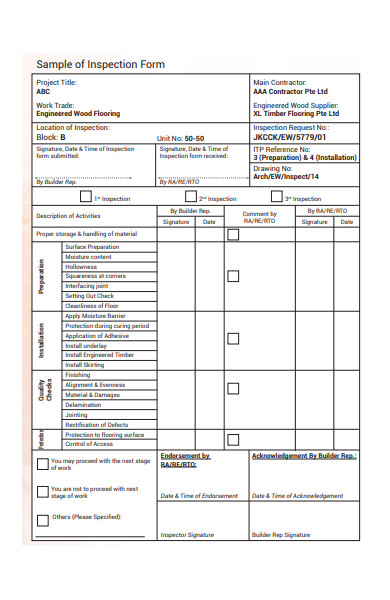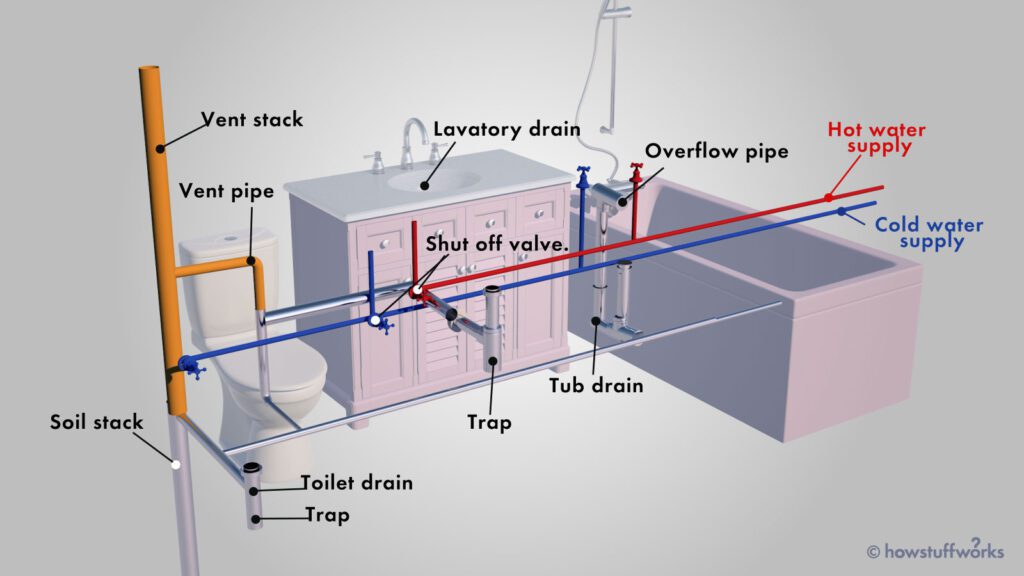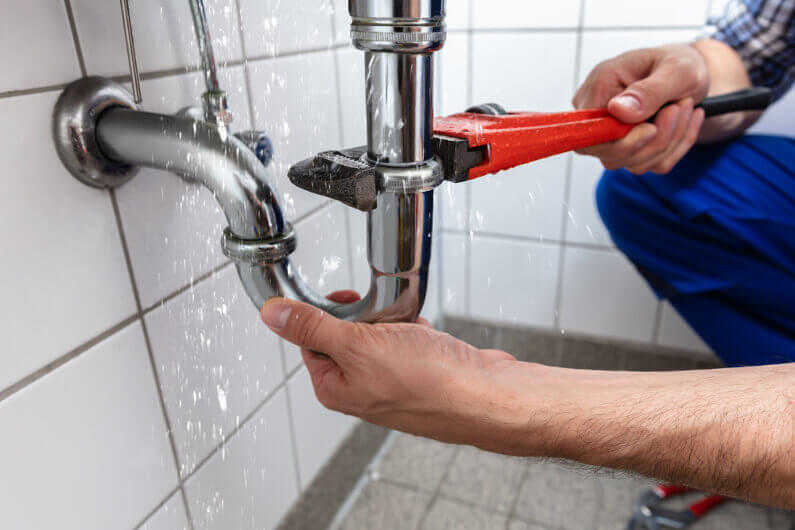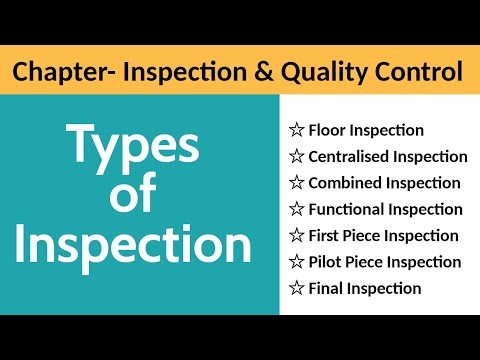In the realm of inspections, simplicity reigns supreme. So, what is the simplest form of inspection? It comes down to visual examination. This straightforward method involves using your eyes to thoroughly observe and analyze an object or area for any signs of damage, irregularities, or faults. Visual inspection is an essential practice in various fields, ranging from construction and manufacturing to healthcare and safety checks. By relying on our visual perception, we can detect potential issues and take appropriate actions, making visual inspection an invaluable tool in ensuring quality and preventing problems.
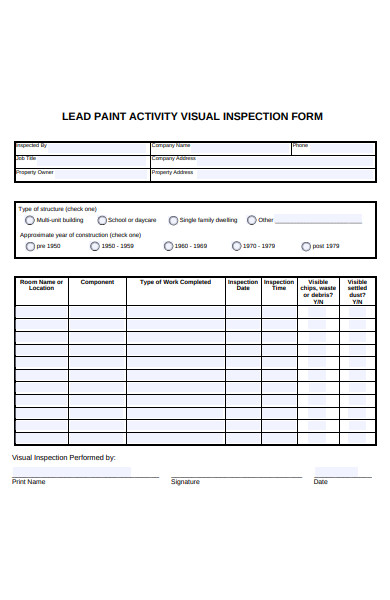

Overview of Inspection
Inspection is a critical process that involves the careful examination of a product, system, or component to ensure that it meets specific requirements, standards, or regulations. It plays a vital role in various industries, including manufacturing, construction, automotive, and aerospace, among others. By thoroughly inspecting items, companies can identify any defects, faults, or deviations from the desired specifications, allowing them to take appropriate measures to rectify the issues before they escalate.
Definition of Inspection
Inspection can be defined as a systematic and organized process of examining and evaluating products, materials, equipment, or structures to ensure they meet certain standards or specifications. It involves the use of various techniques, tools, and methods to assess the quality, functionality, and safety of the item being inspected. The goal of inspection is to identify any deviations, defects, or anomalies that may affect the performance, reliability, or durability of the product.
Importance of Inspection
Inspection is crucial for several reasons. Firstly, it helps ensure that products or systems meet the required quality standards. By identifying and addressing any issues during the inspection process, companies can minimize the risk of delivering faulty or substandard products to customers, which could lead to dissatisfaction, reputational damage, and potential legal liabilities.
Moreover, inspection plays a significant role in maintaining safety standards. In industries where safety is of utmost importance, such as construction, oil and gas, and aerospace, inspections help identify any potential hazards or weaknesses in equipment or structures. This can prevent accidents, injuries, and even loss of life.
Inspection also contributes to maintaining regulatory compliance. In many sectors, there are specific regulations and standards that companies must adhere to. Failure to comply with these requirements can result in penalties, fines, or even the suspension of operations. Regular inspections act as a proactive approach to ensure compliance with regulations and avoid any legal consequences.
Lastly, inspections are vital for quality control and continuous improvement. By conducting inspections during the manufacturing or production process, companies can identify areas for improvement, streamline operations, and enhance overall efficiency. This leads to increased customer satisfaction, reduced waste, and improved profitability.
Types of Inspection
There are various types of inspection methods utilized across industries depending on the nature of the product or system being evaluated. These methods include visual inspection, non-destructive testing (NDT), dimensional inspection, functional testing, and surface inspection. Let’s take a closer look at each of these inspection types.
Visual Inspection
Visual inspection is the simplest and most commonly used form of inspection. It involves visually examining the item or component to identify any visible defects, damages, or deviations from the desired specifications. This type of inspection relies on human senses and does not require the use of specialized equipment or tools. Visual inspection can be performed by trained inspectors or even by the end-users themselves.
Non-Destructive Testing (NDT)
Non-destructive testing (NDT) is a method used to examine the integrity, properties, or characteristics of a material or component without causing any permanent damage. NDT techniques include ultrasonic testing, radiographic testing, magnetic particle testing, liquid penetrant testing, and eddy current testing. These methods allow for the detection of internal defects, such as cracks, voids, or inclusions, without compromising the integrity of the item being inspected.
Dimensional Inspection
Dimensional inspection involves measuring and verifying the geometric features, dimensions, and tolerances of a product or component to ensure they meet the specified requirements. This type of inspection often utilizes precision measurement tools, such as calipers, micrometers, coordinate measuring machines (CMM), or laser scanning devices. Dimensional inspection is commonly used in manufacturing and machining processes to ensure accuracy and conformity to design specifications.
Functional Testing
Functional testing focuses on evaluating the performance, functionality, or operation of a product or system. It involves testing the item under real-world conditions or simulated scenarios to ensure that it functions as intended. Functional testing can be conducted through manual or automated processes and may involve the use of specialized equipment or test rigs.
Surface Inspection
Surface inspection refers to the examination of the surface condition, texture, finish, or cleanliness of a product or material. This type of inspection is particularly crucial for industries where smoothness, cleanliness, or aesthetics are critical, such as automotive, electronics, or food processing. Surface inspection methods include visual examination, magnification techniques, or the use of specialized equipment like automated optical inspection (AOI) systems.
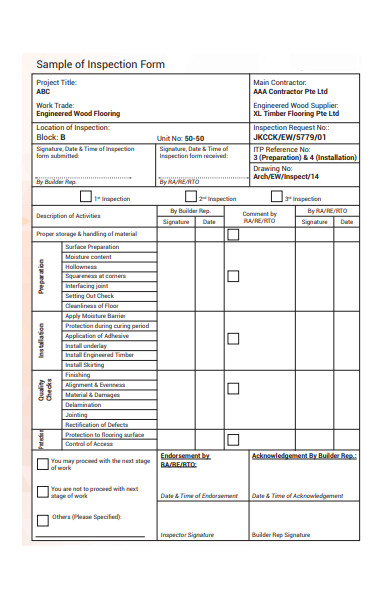

Visual Inspection
Definition and Process
Visual inspection is the most straightforward and intuitive form of inspection. It involves visually examining the product, component, or structure to detect any visible defects, faults, or deviations from the desired specifications. This can be done either with the naked eye or with the use of magnification tools, such as microscopes or magnifying lenses, depending on the level of detail required.
The process of visual inspection typically begins with a thorough examination of the item’s exterior or visible surfaces. Inspectors carefully inspect for any signs of damage, such as cracks, dents, scratches, or surface anomalies. They also look for any inconsistencies in color, texture, or finish that may indicate a defect or deviation from the desired standards.
Advantages and Disadvantages
Visual inspection offers several advantages. Firstly, it is a cost-effective method as it does not require specialized equipment or extensive training. With a trained eye, inspectors can quickly identify visible defects or irregularities, allowing for timely corrective actions. Additionally, visual inspection can be performed in various environments, including on-site inspections or in production lines.
However, visual inspection does have its limitations. It heavily relies on the inspector’s expertise and subjective judgment, which introduces the possibility of human error. Moreover, visual inspection may not be suitable for identifying internal or hidden defects that cannot be detected through visual means alone. In such cases, supplementary inspection methods, like NDT or dimensional inspection, may be necessary.
Applications and Examples
Visual inspection is widely used across industries for various applications. In manufacturing, visual inspection is utilized to examine the quality and integrity of components, ensuring they meet the desired specifications. Product packaging is another area where visual inspection is crucial to ensure that labels, seals, or barcodes are correctly applied.
In construction, visual inspection plays a vital role in identifying any structural defects, such as cracks, corrosion, or deformation in buildings or bridges. It is also utilized in the maintenance of infrastructure to detect any signs of wear and tear, enabling prompt repairs or replacements.
Visual inspection is also relevant in the automotive industry for assessing the quality and functionality of vehicle components or paint finishes. Furthermore, in the food processing industry, visual inspection is essential to detect any contaminants, foreign objects, or blemishes that may affect the safety or quality of the food products.
Overall, visual inspection is a versatile and widely applicable method that can provide valuable information about the condition, quality, and performance of various products and structures.
Non-Destructive Testing (NDT)
Definition and Techniques
Non-destructive testing (NDT) is a comprehensive inspection method used to assess the integrity and properties of materials or components without causing any permanent damage. NDT techniques involve the use of various physical principles to detect and evaluate internal or surface defects, irregularities, or anomalies.
Some commonly used NDT techniques include:
-
Ultrasonic Testing (UT): This technique utilizes high-frequency sound waves to assess the internal structure of materials and detect any defects or flaws. Ultrasonic waves are transmitted into the material, and the reflected waves are analyzed to identify the presence, size, and location of defects.
-
Radiographic Testing (RT): Radiographic testing involves the use of X-ray or gamma radiation to inspect the internal structure of materials. The radiation passes through the object being inspected, creating an image on a film or digital detector. This image can reveal any internal defects or irregularities.
-
Magnetic Particle Testing (MT): Magnetic particle testing utilizes magnetism to detect surface or near-surface defects. The component being inspected is magnetized, and the presence of defects is indicated by the accumulation of magnetic particles on or near the defect.
-
Liquid Penetrant Testing (PT): Liquid penetrant testing is used to identify surface defects or cracks. A liquid dye penetrant is applied to the surface of the material, and excess dye is removed. The presence of defects is revealed when the dye penetrates into and is drawn out from the defects.
-
Eddy Current Testing (ECT): Eddy current testing employs electromagnetic induction to assess the conductivity, thickness, or other material properties. A coil carrying an alternating current generates an electromagnetic field, and any changes in the field caused by defects are detected and analyzed.
Advantages and Disadvantages
NDT offers several advantages over other inspection methods. Firstly, it allows for the detection of internal defects or irregularities that may not be visible to the naked eye or through visual inspection alone. NDT techniques can detect cracks, voids, inclusions, or other imperfections that may compromise the structural integrity or performance of materials or components.
Another advantage of NDT is that it does not cause any permanent damage to the item being inspected. This is particularly important when examining critical components or expensive materials that need to remain intact.
However, NDT techniques also have some limitations. They often require specialized equipment, skilled operators, and controlled environments, which can increase the complexity and cost of inspections. Additionally, NDT methods may not be suitable for all materials or components, and their effectiveness may vary depending on the size, shape, or composition of the item being inspected.
Applications and Examples
NDT techniques are widely utilized across various industries. In the aerospace industry, NDT is used for inspecting aircraft components, such as turbine blades, landing gear, or composite structures. Ultrasonic testing and radiographic testing are commonly employed to ensure the integrity and reliability of critical aerospace components.
In the oil and gas sector, NDT plays a crucial role in inspecting pipelines, storage tanks, or offshore structures. Magnetic particle testing and ultrasonic testing are commonly used to detect any corrosion, cracks, or material degradation that could lead to leaks or structural failures.
NDT is also extensively applied in the automotive industry for assessing the quality of welds, detecting defects in engines or transmission parts, or ensuring the structural integrity of vehicle frames. Additionally, NDT techniques are utilized in the power generation industry for inspecting turbines, boilers, or heat exchangers to identify any flaws that could impact their performance or safety.
With its ability to detect internal defects and evaluate material properties, NDT is a valuable inspection method for a wide range of applications where integrity, reliability, and safety are critical.


Dimensional Inspection
Definition and Methods
Dimensional inspection involves the measurement and evaluation of the geometric features, dimensions, and tolerances of a product or component to ensure they meet the required specifications. This type of inspection is particularly important in manufacturing processes where precision and accuracy are crucial.
Various measurement methods are used in dimensional inspection, depending on the complexity, size, and shape of the item being inspected. Some common dimensional inspection techniques include:
-
Calipers and Micrometers: These handheld measurement tools are used for measuring length, width, or thickness of components. Calipers are useful for measuring external dimensions, while micrometers provide more precise measurements for smaller features.
-
Coordinate Measuring Machine (CMM): A CMM is a computer-controlled inspection device that uses a probing system to accurately measure and record the coordinates of specific points on a component. The collected data can be compared to the CAD model or specified tolerances to ensure compliance.
-
Laser Scanning: Laser scanning utilizes laser beams to measure the shape, contours, or profiles of objects. This method is particularly effective for capturing the detailed 3D geometry of complex components or surfaces.
-
Optical Comparators: Optical comparators use optical magnification and illumination techniques to measure and compare components against reference standards. They are often used in combination with overlays or templates for quick visual comparisons.
Advantages and Disadvantages
Dimensional inspection offers several advantages. Firstly, it provides quantitative data that can be easily compared to the desired specifications or tolerances. This enables objective assessment of the product or component’s conformity with the design requirements.
Additionally, dimensional inspection allows for the identification of any deviations or variations from the desired dimensions. This is crucial for maintaining consistent product quality and ensuring the compatibility or interchangeability of components in assembly or manufacturing processes.
However, dimensional inspection can be time-consuming, especially when dealing with complex or large-scale components. The accuracy and repeatability of measurements can also be affected by environmental factors or operator skill. Furthermore, dimensional inspection may not be suitable for identifying defects or anomalies that are not related to geometric dimensions, such as material properties or product functionality.
Applications and Examples
Dimensional inspection is widely employed across various industries to ensure the accuracy and conformity of manufactured components. In automotive manufacturing, for example, dimensional inspection is crucial for verifying the precise dimensions of engine parts, chassis components, or body panels to ensure proper fit and functionality.
In the medical field, dimensional inspection plays a vital role in the production of medical devices, implants, or prosthetics. Precise measurements and tolerances are essential for ensuring the safety, compatibility, and performance of these critical healthcare products.
For manufacturers of consumer electronics, dimensional inspection is necessary to guarantee the proper alignment and fitting of components within devices. This includes ensuring the correct dimensions of circuit boards, connectors, or display panels, among others.
Dimensional inspection is also relevant in the aerospace industry to verify the accuracy of machined or 3D-printed components used in aircraft or spacecraft. It ensures that the dimensions of critical parts, such as turbine blades, control surfaces, or structural elements, meet the stringent requirements for performance and safety.
Overall, dimensional inspection plays a crucial role in ensuring the precision, accuracy, and compatibility of components, enabling the production of high-quality products across diverse industries.
Functional Testing
Definition and Procedures
Functional testing is an inspection technique that focuses on evaluating the performance, functionality, or operation of a product or system. Unlike other inspection methods that primarily assess the physical characteristics or dimensions, functional testing simulates real-world scenarios or test conditions to verify that the item functions as intended.
The procedures for functional testing vary depending on the nature of the product or system being inspected. It involves subjecting the item to specific scenarios, stimuli, or inputs to assess its response or behavior. This can be done through manual testing, automated testing, or a combination of both.
Functional testing typically follows a predefined set of test cases or procedures that cover various aspects of the item’s functionality. It includes testing for specific features, inputs, or outputs, as well as evaluating the item’s response to different operational conditions.
Advantages and Disadvantages
Functional testing offers several advantages. Firstly, it provides a comprehensive evaluation of the item’s performance under real-world conditions or expected usage scenarios. By simulating the normal operation or intended use of the product or system, functional testing can identify any functional defects, malfunctions, or performance issues that may arise.
Additionally, functional testing enables the verification of specific features, requirements, or specifications. This ensures that the item meets the intended functionality or performance targets as defined by the design or customer requirements.
However, functional testing can be time-consuming and requires careful planning and execution. It often relies on the availability of comprehensive test cases or scripts that cover all possible scenarios. In complex systems or products with multiple functions, functional testing can become challenging and may require specialized expertise or equipment.
Furthermore, functional testing may not fully capture all possible failure modes, especially those that are rare or occur under exceptional conditions. For comprehensive defect detection, a combination of functional testing with other inspection methods, such as NDT or visual inspection, may be necessary.
Applications and Examples
Functional testing is applicable across various industries and sectors. In software development, functional testing is crucial to ensure that software applications or systems meet the specified requirements and operate as intended. Testers simulate different inputs, use cases, or scenarios to verify the software’s functionality, performance, and compatibility.
In the automotive industry, functional testing plays a vital role in testing vehicle components, such as engines, brakes, or electronic systems. By subjecting these components to various operational conditions, manufacturers can confirm that they function correctly and meet the required performance standards.
Functional testing is also utilized in the pharmaceutical industry to assess the effectiveness and safety of drugs or medical devices. This may involve testing the formulation of a drug, the accuracy of dosage delivery systems, or the performance of medical diagnostic equipment.
In the consumer electronics sector, functional testing is critical for ensuring the reliability and usability of devices. Manufacturers subject devices to various operating conditions, such as temperature extremes, humidity, or vibration, to verify their performance and durability.
Overall, functional testing serves as a practical method for evaluating the performance, functionality, and usability of products or systems under realistic conditions, enabling the detection of any functional defects or performance issues.


Surface Inspection
Definition and Techniques
Surface inspection involves the examination of the surface condition, texture, finish, or cleanliness of a product or material. This type of inspection focuses on identifying any surface defects, imperfections, or contaminants that may affect the quality, appearance, or functionality of the item being inspected.
Various techniques are employed in surface inspection, depending on the specific requirements or characteristics of the item being examined. Some commonly used surface inspection techniques include:
-
Visual Examination: Visual inspection is often the first step in surface inspection. It involves carefully examining the surface with the naked eye or using magnification tools to identify any visible defects, scratches, dents, or blemishes.
-
Magnification Techniques: Magnification tools, such as microscopes or magnifying lenses, are employed to enhance the visibility and resolution of surface features. This allows for the detection of finer defects or surface irregularities that may not be visible to the naked eye.
-
Automated Optical Inspection (AOI): AOI systems utilize cameras and image processing algorithms to automatically inspect surfaces for defects or anomalies. These systems can scan large areas quickly and accurately, minimizing the dependence on human inspection.
-
Tribology and Surface Roughness Measurement: Tribology techniques, such as profilometry or surface roughness measurement, assess the surface texture or roughness of a material. These methods are particularly relevant in industries where smoothness, friction, or wear characteristics are critical.
Advantages and Disadvantages
Surface inspection offers several advantages. Firstly, it allows for the detection and elimination of any visible defects, blemishes, or imperfections that may impact the quality or aesthetics of the item. This is particularly crucial in industries where appearance, such as automotive or consumer electronics, plays a significant role in customer satisfaction.
Surface inspection also enables the identification of surface contamination, which can be detrimental to the integrity or functionality of the item. Contaminants, such as dirt, oils, or foreign particles, can affect the performance of components, the adhesion of coatings, or the clarity of optical surfaces. Detecting and removing these contaminants during surface inspection helps ensure the item’s quality and reliability.
However, surface inspection may not be suitable for identifying subsurface defects or anomalies that may affect the integrity or functionality of the item. In such cases, supplementary inspection methods, such as NDT or dimensional inspection, may be necessary.
Moreover, due to the manual nature of surface inspection, it can be subjective and dependent on the inspector’s expertise. Automated surface inspection systems, like AOI, address this limitation by providing more objective and consistent results.
Applications and Examples
Surface inspection is widely applied across industries where the appearance, cleanliness, or finish of products or materials is critical. In the automotive industry, surface inspection plays a significant role in ensuring the quality and aesthetics of vehicle components, such as paint finishes, chrome plating, or upholstery. By closely examining the surfaces, manufacturers can detect any defects, scratches, or imperfections that may impact the overall appearance and value of the vehicle.
Surface inspection is also relevant in the electronics industry to verify the cleanliness and integrity of electronic components or printed circuit boards. Contaminants, such as solder flux residues, can affect the performance and reliability of electronic devices. With surface inspection, manufacturers can identify and remove any contaminants, ensuring the functionality and durability of the electronics.
In the food processing sector, surface inspection is essential for ensuring the cleanliness and safety of food products. By inspecting the surfaces of containers, packaging, or equipment, potential contaminants, such as mold, bacteria, or foreign particles, can be detected. This helps maintain the quality, hygiene, and compliance of food products.
Surface inspection is equally valuable in the medical field, where the cleanliness and sterility of medical devices, implants, or surgical instruments are of utmost importance. By inspecting the surfaces of these items, medical professionals can ensure that they are clean, free from contaminants, and suitable for use in critical healthcare procedures.
Overall, surface inspection provides a critical means of assessing the quality, cleanliness, and appearance of various products and materials, contributing to the satisfaction and safety of end-users.
Comparison of Inspection Types
After exploring the different types of inspection methods, it is helpful to compare them based on various aspects to determine their effectiveness, ease of implementation, cost, time required, and limitations. Understanding these factors can assist in selecting the most suitable inspection method for a particular application or scenario.
Effectiveness
When comparing the effectiveness of inspection types, it is essential to consider the specific requirements and objectives of the inspection. Some inspection methods may excel in detecting specific defects or anomalies, while others may provide a more comprehensive assessment.
Non-destructive testing (NDT) techniques, such as ultrasonic testing or radiographic testing, are particularly effective in identifying internal defects, such as cracks or voids. They can provide critical information about the internal structure or condition of materials or components.
Visual inspection, on the other hand, is useful for identifying visible defects, damages, or surface irregularities. It offers a quick and cost-effective way to detect surface anomalies that may impact the aesthetics or functionality of the item.
Dimensional inspection focuses on the accurate measurement and verification of geometric features, ensuring that components meet the desired dimensions and tolerances. This is crucial for maintaining compatibility, interchangeability, or functionality in assembly or manufacturing processes.
Functional testing evaluates the performance, functionality, or operation of a product or system. It is particularly effective in assessing the item’s behavior under real-world conditions or intended use scenarios.
Surface inspection is valuable for evaluating the surface condition, texture, or cleanliness of an item. It ensures that the appearance, finish, or cleanliness meets the desired standards or specifications.
The effectiveness of an inspection type largely depends on the specific requirements, characteristics, and objectives of the inspection. Choosing the most suitable method will require a thorough understanding of these factors.
Ease of Implementation
The ease of implementing an inspection method can greatly impact its feasibility and practicality in real-world applications. Some inspection methods may require specialized equipment, controlled environments, or trained operators, making them more complex and time-consuming to implement.
Visual inspection is generally the simplest form of inspection since it relies on human senses and does not require specialized equipment. Trained inspectors or end-users can visually examine the item and identify any visible defects or irregularities.
Functional testing may involve manual or automated processes, depending on the complexity of the item being tested. Manual functional testing may require test cases or procedures to be executed by human operators. Automated functional testing utilizes specialized equipment or software to simulate test conditions and assess the item’s response automatically.
Non-destructive testing (NDT) methods often require specialized equipment, such as ultrasonic testing devices, X-ray machines, or magnetic particle testing equipment. These techniques may also necessitate trained inspectors or operators to carry out the inspections under controlled conditions.
Dimensional inspection may involve the use of measurement tools, such as calipers, micrometers, or coordinate measuring machines (CMM). The complexity of the inspection will depend on the precision and accuracy required for the measurements.
Surface inspection can range from simple visual examination to more complex techniques such as automated optical inspection (AOI). The complexity of implementation will vary depending on the level of detail and specificity required for the inspection.
Considering the ease of implementation is crucial when deciding which inspection method is most suitable for a specific application or scenario.
Cost
The cost of inspection can vary significantly depending on the type of inspection method used, the complexity of the item being inspected, the required expertise, and the equipment or tools employed.
Visual inspection is generally the most cost-effective method as it does not require specialized equipment or extensive training. It can be performed by trained inspectors or even by end-users themselves. However, the effectiveness of visual inspection for certain types of defects or anomalies may be limited.
Functional testing costs can vary depending on the complexity and scope of the item being tested. Manual functional testing may require human resources, including skilled operators and test case development. Automated functional testing may involve initial setup costs for specialized equipment or software.
Non-destructive testing (NDT) methods often require specialized equipment, such as ultrasonic testing devices or radiographic testing machines. These devices can be costly to acquire, maintain, and operate. Trained inspectors or operators may also be necessary, adding to the overall cost of the inspection.
Dimensional inspection costs can vary depending on the precision and accuracy required for the measurements. Precision measurement tools, such as CMMs or laser scanning devices, can be expensive. Additionally, training operators to operate these tools correctly may be necessary.
Surface inspection costs will depend on the complexity of the inspection and the specific techniques used. Simple visual examination will be the most cost-effective, while more advanced techniques like automated optical inspection (AOI) may require initial investments in specialized equipment.
Considering the cost of inspection is essential for assessing its feasibility and ensuring that it aligns with the available resources and budget.
Time Required
The time required for inspection can vary depending on the type of inspection method used, the complexity of the item being inspected, and the number of inspection points or features to evaluate.
Visual inspection is usually the quickest form of inspection as it relies on visual examination and does not require extensive setup or specialized equipment. However, the speed of inspection may depend on the complexity or number of features that need to be inspected.
Functional testing time will depend on the complexity of the test cases or scenarios and the availability of skilled operators or automated testing equipment. Manual functional testing may take longer as human operators execute the test steps, while automated functional testing can be faster as it simulates test conditions automatically.
Non-destructive testing (NDT) methods may require more time as they often involve specialized equipment or tools. The setup, calibration, and execution of NDT inspections can be time-consuming, especially for complex or large-scale components.
Dimensional inspection time will vary depending on the precision and accuracy required for the measurements. Simple measurements with calipers or micrometers can be quick, while more complex measurements with coordinate measuring machines (CMMs) or laser scanning devices may require more time.
Surface inspection time will depend on the complexity of the inspections and the specific techniques used. Visual examination can be quick, while more advanced techniques like automated optical inspection (AOI) may involve additional setup or scanning time.
Considering the time required for inspection is crucial for incorporating it into production schedules, ensuring efficiency, and minimizing any potential disruptions.
Limitations
Every inspection method has its limitations and may not be suitable for all types of defects, anomalies, or materials. Understanding these limitations is crucial for selecting the most appropriate inspection method and addressing any potential gaps in the inspection process.
Visual inspection is limited to identifying visible defects or anomalies and may not be suitable for detecting subsurface or internal defects. It heavily relies on the inspector’s expertise and subjective judgment, which can introduce the possibility of human error.
Functional testing focuses on evaluating the performance or operation of a product or system, but it may not capture all possible failure modes or defects. It also relies on the availability of comprehensive test cases or scenarios to cover all potential conditions.
Non-destructive testing (NDT) methods have limitations depending on the material or component being inspected. Some materials may be challenging to inspect using certain methods, and the effectiveness of NDT techniques may vary depending on the size, shape, or composition of the item being inspected.
Dimensional inspection is suitable for assessing geometric features and dimensions but may not provide insights into other defects or anomalies that are not related to geometric dimensions.
Surface inspection techniques focus on surface conditions and may not be suitable for inspecting subsurface defects or anomalies. The effectiveness of surface inspection may also be limited to the level of detail or resolution provided by the inspection technique employed.
Understanding the limitations of inspection methods is crucial to ensure that the chosen method aligns with the specific requirements, objectives, and characteristics of the inspection.
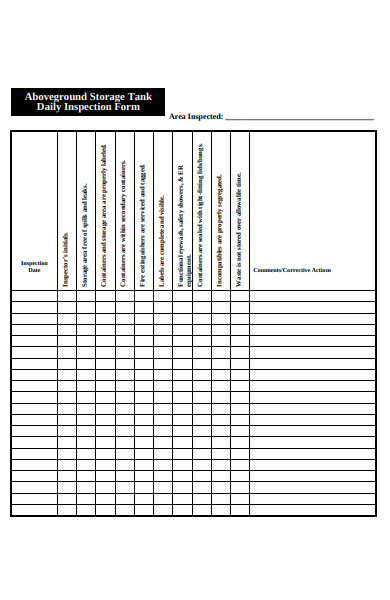

Choosing the Simplest Form of Inspection
When it comes to choosing the simplest form of inspection, several considerations and contextual factors come into play. While simplicity is desirable, it is crucial to balance it with the effectiveness, accuracy, and reliability needed for the specific application.
Considerations
To identify the simplest form of inspection, consider the following factors:
-
Nature of the Defects or Anomalies: Evaluate the type and properties of the defects or anomalies that need to be detected. Certain inspection methods may be more suitable for specific defect types, while others may offer a more comprehensive assessment.
-
Objectives of Inspection: Clarify the objectives of the inspection. Is the focus on identifying visible defects, internal defects, surface conditions, or functionality? Understanding the primary objective will help prioritize the most appropriate inspection method.
-
Material or Component Characteristics: Consider the material composition, size, shape, or complexity of the item being inspected. Some inspection methods may be better suited for specific materials, while others may be more versatile.
-
Available Resources and Expertise: Assess the available resources, budget, time, and expertise for implementing the inspection method. Consider the required equipment, trained operators, setup time, or specialized tools needed.
Contextual Factors
In addition to the considerations mentioned above, contextual factors specific to the application or scenario should also be taken into account:
-
Industry and Sector: Different industries may have specific standards, regulations, or requirements that influence the choice of inspection method. Evaluate industry best practices and guidelines to ensure compliance.
-
Product or Component Criticality: Consider the criticality of the product or component being inspected. Critical or high-risk items may necessitate more comprehensive inspection methods to ensure safety, reliability, or compliance.
-
Production Volume and Speed: Assess the production volume, frequency, and speed requirements. Some inspection methods may not be feasible for high-speed or continuous production lines, while others may be better suited for specific production volumes.
-
Inspection Frequency or Interval: Determine how frequently the inspection needs to be performed. Some inspection methods may be more suitable for regular or continuous monitoring, while others may be more applicable for intermittent or periodic inspection.
Budget Constraints
Budget constraints also play a significant role in choosing the simplest form of inspection. Evaluate the available budget for acquiring inspection equipment or tools, conducting training, or outsourcing inspection services. Consider the long-term cost implications, including maintenance, calibration, or upgrades associated with the chosen inspection method.
Risk Assessment
Conduct a risk assessment to evaluate the potential risks or consequences of failing to detect certain defects or anomalies. This will help prioritize the inspection method that offers the most effective risk mitigation. High-risk applications may require more comprehensive or sophisticated inspection methods to ensure safety, reliability, or compliance.
By carefully considering these factors and conducting a thorough evaluation, it is possible to identify the simplest form of inspection that meets the specific needs, objectives, and constraints of the application.
Conclusion
Inspection plays a crucial role in ensuring the quality, safety, and reliability of products, materials, components, or structures. By carefully examining items, defects, anomalies, or deviations can be identified, enabling timely corrective actions and preventing potential issues.
There are various types of inspection methods available, each suited for specific applications and scenarios. Visual inspection is the simplest and most widely used form of inspection, relying on visual examination to detect visible defects. Non-destructive testing (NDT) involves specialized techniques to assess the integrity and properties of materials or components without causing permanent damage. Dimensional inspection focuses on measuring and verifying geometric features and dimensions. Functional testing evaluates the performance or operation of products or systems under real-world conditions. Surface inspection examines the surface condition, texture, or cleanliness of items.
The choice of the simplest form of inspection depends on various factors, including the application requirements, available resources, budget constraints, and risk assessment. By carefully considering these factors and evaluating the effectiveness, ease of implementation, cost, time requirements, and limitations of each inspection method, the most appropriate method can be selected.
Ultimately, selecting the simplest form of inspection that meets the specific needs of the application will contribute to maintaining quality, ensuring safety, and enhancing customer satisfaction.

